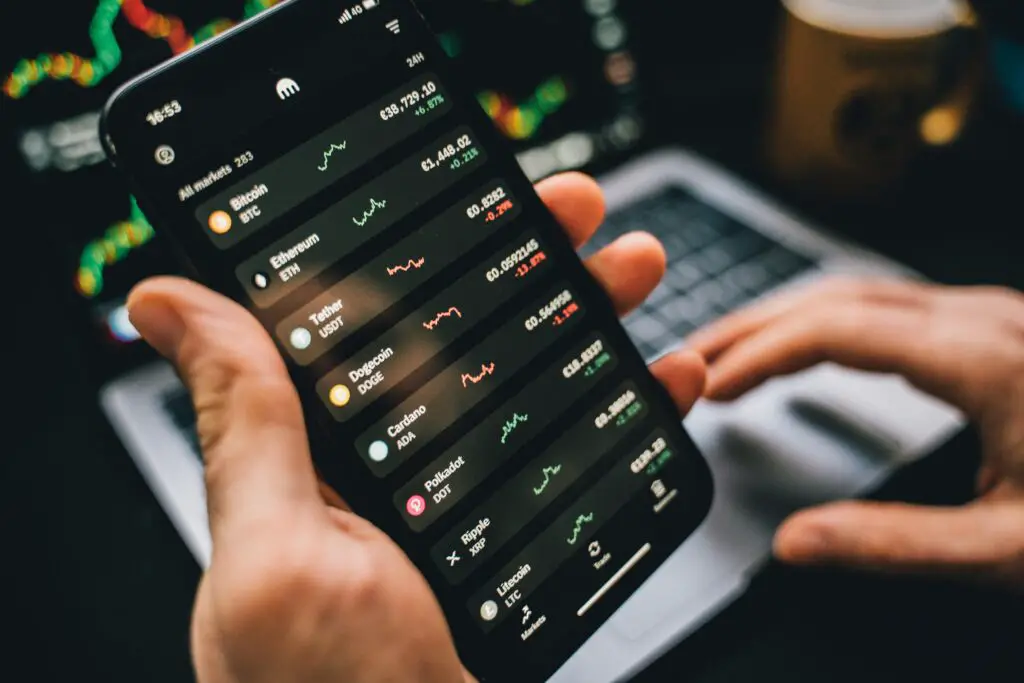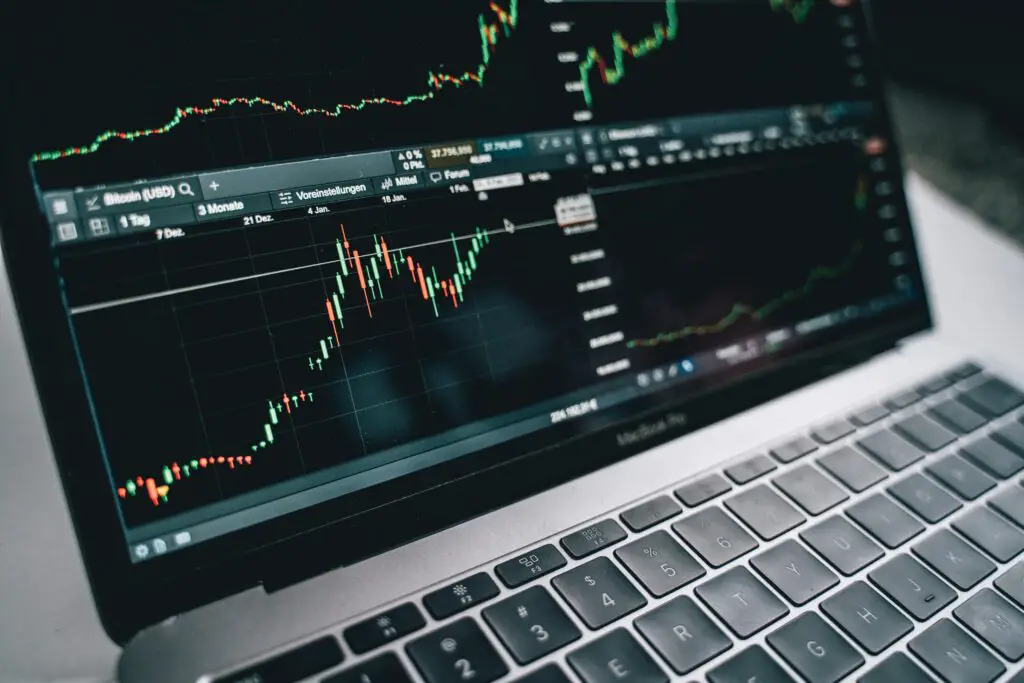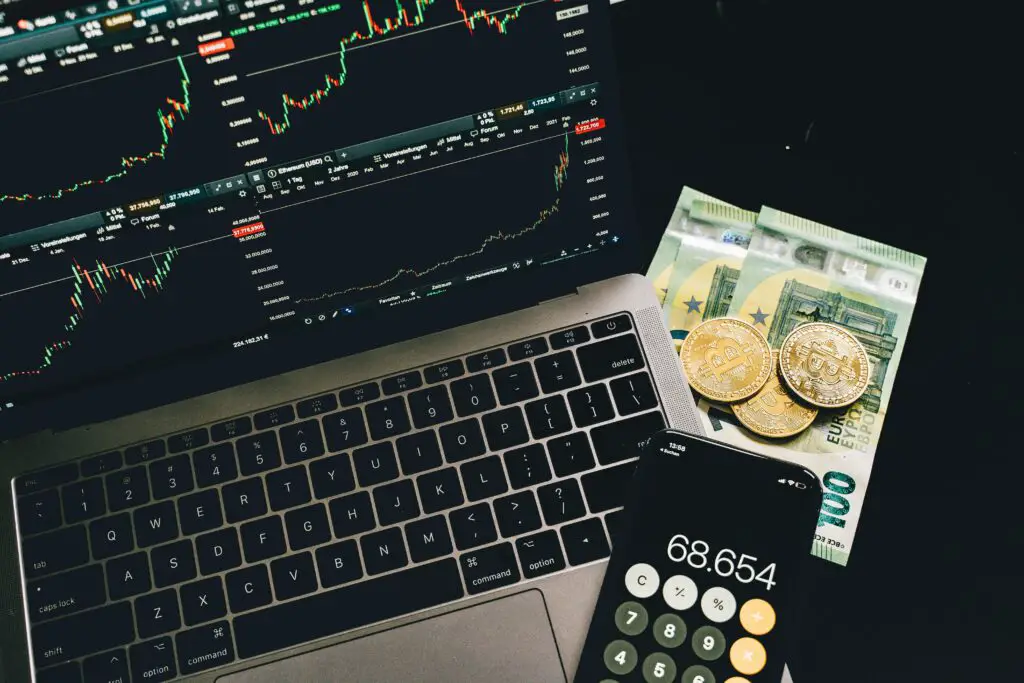Trading foreign currencies or forex can be an excellent way to make money if you know what you are doing. Bollinger Bands are a tool buyers can use to help them make better choices. They are a kind of chart sign that shows if a currency is too bought or sold. Let’s begin by discussing Bollinger Bands, how they work, and how you can use them when dealing with forex.

What do Bollinger Bands mean?
Bollinger Bands are three lines that are made on a price chart. Traders use these lines to figure out how volatile the market is and how much the price of a coin is changing. John Bollinger came up with the bands in the 1980s.
The middle band shows a simple moving average (SMA) of the currency’s price over 20 times (days, hours, etc.).
Upper Band: This line is two standard deviations above the middle band.
Below the middle band, this line is two standard deviations away.
The standard deviation shows how far the prices are from the mean-priced item. The bands will be more significant if prices are very different. The bands will be less wide if prices are close to each other.
Why Should You Use Bollinger Bands?
Bollinger Bands helps traders find places where they might want to buy or sell. For the most part, they are helpful because:
Figure out when a currency is overbought or oversold. If the price is close to the upper band, it may be overbought, which means it may be too high and will likely fall soon. The price may be oversold when it is close to the lower band. This means it may be too low and will likely go up soon.

Find Trends: If the price stays in the upper band, it may be in an upswing, which means it is going up. If it stays in the lower band, it could be in a downturn, which means it is falling.
Measure Volatility: The width of the band can tell you how volatile the market is. Wider bands are more volatile than smaller bands.
How to Figure Out Bollinger Bands
To read Bollinger Bands, you have to look at how the price changes for the bands. Here are a few everyday situations: it could mean that the currency has been bought too much and is due for a price drop. In this case, some buyers might consider selling, which could mean that the currency has been sold for too long and should go up. In this case, some buyers might consider buying.
That means the price stays close to the middle band. This could mean the market is solid and not going up or down strongly.
Bands Widening (Bollinger Band Squeeze): This means that volatility is rising, and there may be an escape. The price could go up or down very quickly.
Bands Limiting: This means that volatility is going down, and there may be a time of consolidation. The price might stay about the same.

How to Use Bollinger Bands When Trading Forex
Now that you know what Bollinger Bands are and how to read, they are ready to discuss how to trade with them.
Putting together Bollinger Bands
Bollinger Bands are something you can add to your price charts on most trading systems. A lot of the time, this is under “indicators.” Once added, a 20-period SMA with bands set at two standard deviations above and below is often the default setting. These choices are an excellent place to start, but you can change them to fit your trading style.
Making a plan for trading
Traders use the following simple tactics with Bollinger Bands:
1. Bounce of the Bollinger Band
For this approach, you need to look for price changes in the bands:
When the price hits the bottom band, it starts to go up, which is a good sign.
When the price hits the top band and starts to go down, you should sell.
This plan is based on the idea that the price will mostly stay inside the bands and that the bands will serve as levels of support and pushback.

2. Breakout of the Bollinger Band
For this plan to work, you need to find breaks, which are times when the price goes above or below the bands:
When the price breaks above the top band, the price is going up strongly.
If prices are likely to change quickly, this approach will work well.
3. Putting together other indicators
You can get better results when you use Bollinger Bands with other tools. For instance, using Bollinger Bands and the Relative Strength Index (RSI) can help confirm when a price is overbought or depressed. If a currency’s price hits the upper band and the RSI shows that it has been bought too much, it could be a good sign to sell.
Examples of Deals
Look at a few moves to understand how you might use Bollinger Bands in real life.
Bollinger Band Bounce as an Example
You are looking at the EUR/USD pair of currencies. You buy because you think the price will return to the middle band. If the price keeps decreasing, you will make money when the price goes up to the middle band.
Example 2: Breakout of the Bollinger Band
Take a look at the USD/JPY pair now. The price moves quickly above the upper band and breaks through it. You choose to buy because you think the price will keep going up. To protect yourself in case of a fake breakout, you put a stop loss order just below the upper band. The price keeps increasing, and you take your profit to a level you already set.

How to Make the Most of Bollinger Bands
Here are some things to remember when you trade forex with Bollinger Bands:
Please do Not Depend on Them Alone: Bollinger Bands can be helpful but should not be the only thing you use. Use them along with other indicators and analysis methods to make better choices.
You can change the settings as needed. The Bollinger Bands default settings (20-period SMA and two standard deviations) are an excellent place to start, but you can change them depending on how you trade and the currency pair you are dealing with.
Keep an eye on the market. Bollinger Bands works best when the market is not intensely moving. During solid trends, the price may stay close to the upper or lower band for a long time, which can cause false signs.
Avoid using Bollinger Bands in real investing until you have tried them in a demo account. It will help you understand how they work and what the signs they send mean.
Take Care of Your Risks: Even if you have the best tools, always use stop-loss options and be aware of your risks.
What Not to Do: Common Mistakes
When buyers use Bollinger Bands, they often make the following mistakes, which you should not make:
Ignoring Other Indicators: Bollinger Bands alone can give false signs. They should always be used with other signs.

Bollinger Bands can send signs in different market conditions, so use them carefully. Lease pay attention to the general trend and volatility of the band.
Do not trade too much. It would help if you only sometimes traded when the price hit a band. Heck, see if other signs and the market agree with your findings.
If you ignore stop-loss orders or put too much money at risk on one trade, you could lose a lot of money. Always be careful about how you handle risk.
In conclusion
If you know how to use them and how they work, you can find good times to buy and sell, spot trends, and determine how volatile the markets are. Bollinger Bands should always be used with other indicators and research methods, and you should practice them in a test account. You should also always be aware of your RK. Bollinger Bands can be helpful for traders if you learn how to use and practice them.

